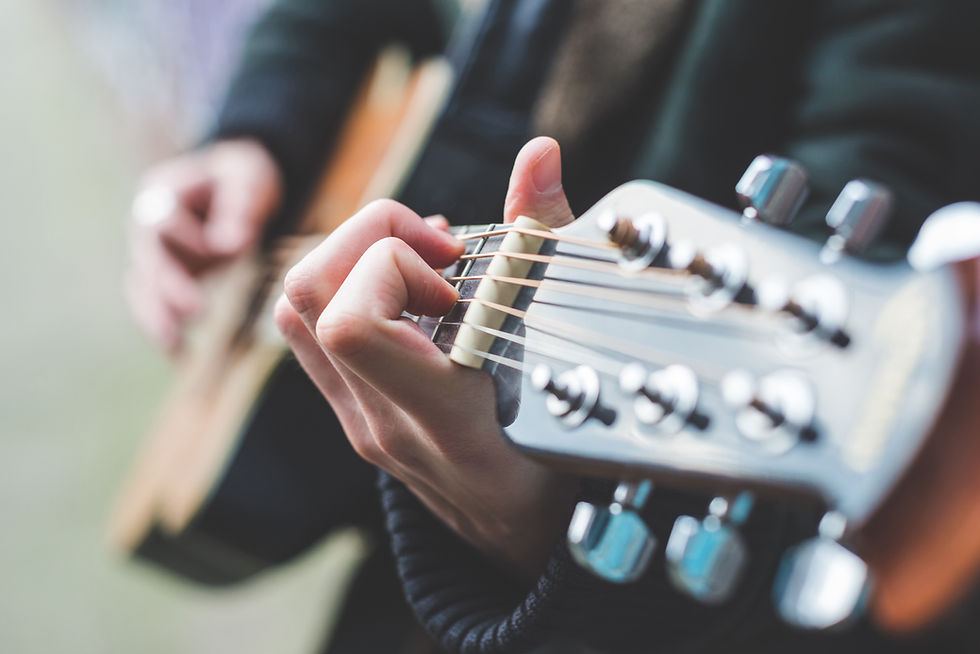Making Waves at Studio B
- Brittany Groveman

- Oct 4, 2018
- 3 min read
Updated: Nov 26, 2018
"Where words fail, music speaks." - Hans Christian Andersen
Making Waves at Studio B allows school groups to travel to the Historic RCA Studio B that is owned and operated by the Country Music Hall of Fame and Museum. Famous artists, including Elvis Presley and Chet Atkins, have come to Music City just to record here. RCA Studio B holds great significance in the history of country music and Nashville. The program that is offered to school groups incorporates elements of STEAM (Science, Technology, Engineering, Arts, and Math). Students get a lesson about the acoustic elements that are featured within the studio. The structure of the studio, the materials that it is made of, and the placement of instruments, vocalists, and musicians all play a role in the sound that results in a final production. Students also get the opportunity to make their own recording of their class singing "Hound Dog" by Elvis Presley at the end of the program.
The program I assisted with was done with 6th grade students. When the students first arrived, they got a tour that gave them a lesson on the history and importance of the studio. The Studio B Historic told the students about how the studio came to be and all the icons in country music who have recorded there. Clips of song were even played along the way to add a different element to the experience. The group walked through a few other rooms in the building that used to be other studios before reaching studio B. Rather than an educator from the School Programs team leading the program, the radio engineers from the studio took on that role.
Once in studio B, the engineers began to talk about the physical structure of the studio. They pointed out elements of the walls and commented on the fact that they are rounded. This is done to break the sound waves when they are created from music. It also helps to ensure that there is no echo. The engineers pointed out the vocal sweet spot in the room. They let students come up and try speaking in that spot versus others in the room to demonstrate how one's voice sounds different in that particular spot. The walls of studio B also appear to be staggered in a zig zag shape of sorts. They were described as being arranged like an accordion. The materials that the walls are made off determine whether the sound will bounce off the surface or be absorbed. Flat walls allow for sound to bounce back while soft walls absorb the sound with impressions. This allows the walls to have the effect of controlling sound based on the texture of their surfaces. The engineers went on to describe how if the walls were flat and parallel to each other the sound would continuously bounce back and forth until it died out. If areas of the room were set up like this it would also create nodes, certain spaces of the room where sound doesn't occur.
Microphones were also passed around the room for students to examine. Energy was a recurring theme discussed as one of the engineers described to the students how there are elements within the microphone that are responsible for different tasks. For example, the capsule is what picks up sound inside the microphone and the transducer changes one type of energy into another. In the case of music, a transducer changes acoustic energy into electrical energy. Reverb, essentially echo, was mentioned as well during the program. The studio even has a separate room upstairs dedicated solely to reverb.
An important subject area the historian who led the tour I watched hit upon was a female presence in the studio. She noted to the students that there were women playing instruments and singing in the videos and pictures shown around the studio. It was not common for a women to be playing guitar professionally in 1963. In addition to female musicians, woman were also taking charge from the management side. For example, the historian mentioned that a woman named Anita Kerr was a producer, conductor, and arranger at the time.
The final portion of the program included an engineer showing the students an analog tape machine, how it is used to cut and splice recordings, and the students getting to make their own recording of "Hound Dog" as a class!




Comments